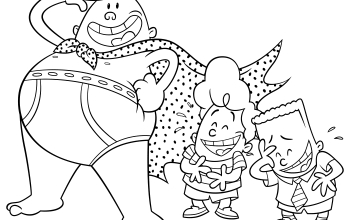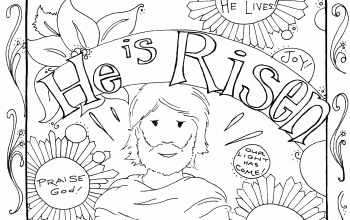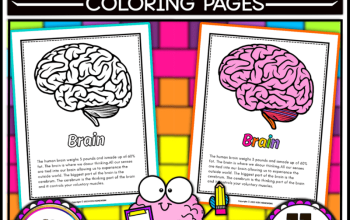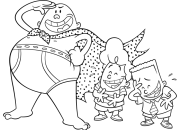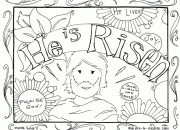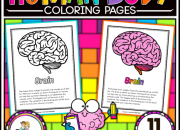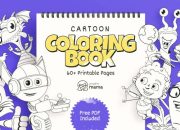Market Overview of Coloring Book Publishers

Coloring book publishing companies – The coloring book industry, while seemingly niche, represents a significant market with diverse players catering to various demographics. Understanding the competitive landscape, business models, and emerging trends is crucial for anyone involved or interested in this sector. This overview will analyze key aspects of the coloring book publishing market.
Top Coloring Book Publishing Companies
Precise market share data for individual coloring book publishers is often proprietary and unavailable publicly. However, a general overview of prominent players and their typical target audiences can be provided. The following table offers an estimated ranking and market share, acknowledging that these figures are approximate and based on observable market presence and reported sales.
| Rank | Company Name | Market Share (Estimate) | Target Audience |
|---|---|---|---|
| 1 | (Placeholder – Large International Publisher, e.g., Scholastic) | ~20% | Children (various age groups), general audiences |
| 2 | (Placeholder – Large International Publisher, e.g., Penguin Random House) | ~15% | Adults, children, specific niche interests (e.g., fantasy, animals) |
| 3 | (Placeholder – Independent Publisher specializing in adult coloring books) | ~10% | Adults, focusing on therapeutic and creative outlets |
| 4 | (Placeholder – Large International Publisher, e.g., HarperCollins) | ~8% | Children, young adults, licensed properties |
| 5 | (Placeholder – Independent Publisher, strong online presence) | ~7% | Adults, specific niche interests (e.g., mandala designs, nature) |
| 6-10 | (Placeholder – Various smaller publishers and independent artists) | ~40% (combined) | Diverse, depending on individual publisher focus |
Business Models of Coloring Book Publishers
Three distinct business models are commonly observed within the coloring book publishing industry. Large international publishing houses often leverage established distribution networks and marketing power to reach wide audiences, typically focusing on licensed properties or established authors. Their business model emphasizes economies of scale and brand recognition. Independent publishers, conversely, frequently concentrate on niche markets or unique artistic styles, relying on direct-to-consumer sales and online platforms for distribution.
This allows for greater creative control but requires more focused marketing efforts. Finally, self-published artists often utilize print-on-demand services, offering a highly personalized and flexible approach, although this model usually results in lower profit margins per unit sold. Each model has its own strengths and weaknesses, with success dependent on factors such as market positioning, marketing strategy, and overall operational efficiency.
Current Trends and Future Projections, Coloring book publishing companies
The coloring book market has witnessed significant growth, particularly in the adult coloring book segment, fueled by its perceived therapeutic benefits and creative expression. Trends indicate a continued focus on high-quality designs, innovative formats (e.g., oversized books, journals), and collaborations with influencers and artists to expand reach and appeal. Future projections suggest a sustained market, with potential growth in digital coloring books and augmented reality applications.
The integration of technology, along with a continued focus on diverse themes and styles, is expected to shape the future of the coloring book publishing industry. For example, the success of adult coloring books featuring intricate designs and calming themes shows a potential for expansion into other mindfulness and wellness-related products. Similarly, the rise of digital coloring apps demonstrates an adaptation to changing consumer preferences and technological advancements.
Production and Printing Processes: Coloring Book Publishing Companies
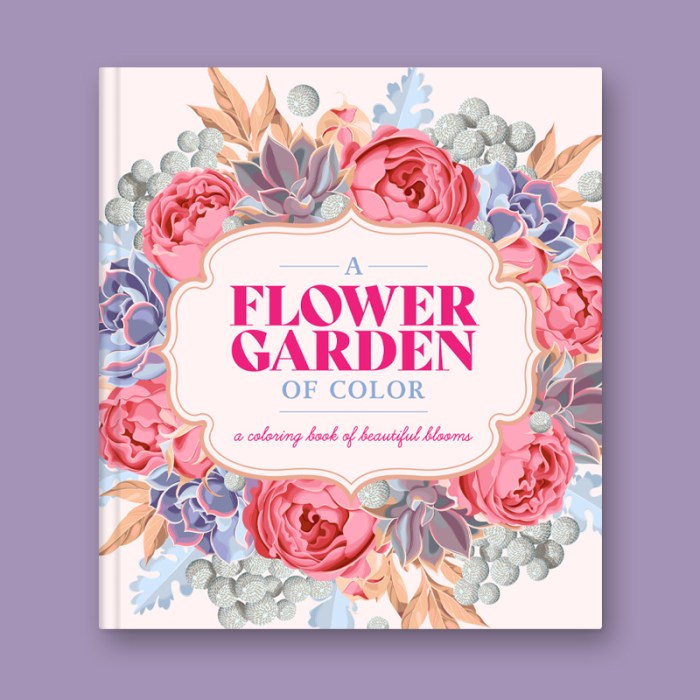
Producing a high-quality coloring book involves a careful consideration of printing techniques and paper selection to achieve the desired aesthetic and durability. The process, from initial design to final distribution, requires meticulous planning and execution to ensure a successful product. The choice of printing method significantly impacts both the final cost and the overall quality of the finished coloring book.The production process for a coloring book typically follows a linear path, starting with the initial concept and design and culminating in distribution to retailers or consumers.
Each stage presents unique considerations impacting the final product’s quality and cost-effectiveness.
Printing Techniques and Their Comparison
Several printing methods are suitable for coloring book production, each offering a different balance between cost and quality. Offset printing, digital printing, and screen printing are the most common choices. Offset printing, a high-volume method, provides excellent color accuracy and sharp detail at a lower cost per unit for large print runs. However, it involves higher upfront setup costs.
Digital printing, on the other hand, is ideal for smaller print runs and allows for greater flexibility with design changes, but it may cost more per unit for larger quantities. Screen printing, while offering a unique textured look and feel, is generally more expensive and less suitable for complex designs with many colors. The selection of the appropriate printing technique is directly tied to the expected print run size and the desired level of detail and color accuracy.
For instance, a small independent artist producing a limited edition coloring book might opt for digital printing, while a large publisher releasing a mass-market title would likely favor offset printing.
Production Process Steps
The journey from concept to finished product involves several key steps. First, the design phase includes creating the artwork, which might involve digital illustration or traditional methods scanned into digital format. This is followed by layout and pre-press preparation, where the artwork is arranged into pages, ensuring proper bleeds and margins. Next, the printing process itself is undertaken, followed by finishing operations like cutting, folding, and binding.
Finally, quality control checks are performed before the coloring books are packaged and distributed to wholesalers or retailers. Each of these stages contributes to the overall cost and timeline of the project. For example, delays in the artwork approval process can significantly impact the project’s overall schedule.
Paper Stock and Binding Method Selection
Choosing the right paper stock and binding method is crucial for a coloring book’s success. The paper should be thick enough to prevent bleed-through from crayons or markers, yet not so thick as to make the book unwieldy. Common choices include cardstock and high-quality drawing paper. Thicker paper, while enhancing the coloring experience, increases the overall cost.
Similarly, the binding method should ensure durability and ease of use. Saddle-stitch binding (stapling) is cost-effective for smaller books but less durable for larger ones. Perfect binding (gluing pages together) offers greater durability for larger books but increases the production cost. Spiral binding allows for the book to lay flat, a feature appreciated by many users, but can be more expensive than saddle-stitch.
The choice of paper and binding method needs to be carefully weighed against the target audience and budget. For example, a children’s coloring book might opt for a more economical saddle-stitch binding and lighter weight paper, while a more sophisticated adult coloring book might utilize perfect binding and heavier, higher-quality paper.
Many coloring book publishing companies cater to diverse interests, from intricate mandalas to whimsical animals. A prime example of a successful collaboration is seen with the release of the disney portraits coloring book , showcasing the enduring appeal of classic characters. This highlights how publishers effectively leverage popular licenses to expand their market reach and offer unique coloring experiences to consumers.

